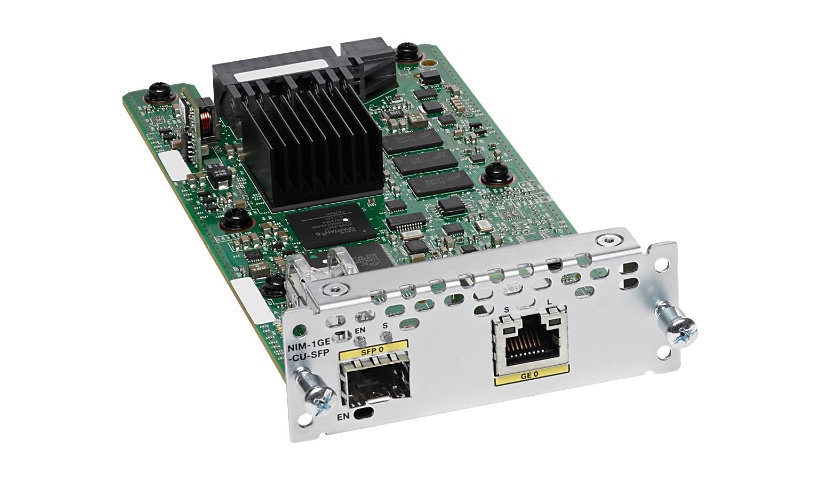
Know your gear
Bring high-density Gigabit Ethernet connectivity to your Cisco 4000 Series Integrated Services Routers with the Cisco WAN Network Interface Expansion Module. This plug-in Gigabit SFP works on Gigabit Ethernet protocol for enhanced connectivity and fast data transfer. With RJ-45 and SFP (mini-GBIC) connectors, this expansion module offers a flexible solution for your enterprise, business or data center. It is designed for the Cisco 4451-X Integrated Services Router, Cisco 4451-X Integrated Services Router Security Bundle, Cisco 4451-X Integrated Services Router Voice and Video Bundle and Cisco 4451-X Integrated Services Router Voice Security Bundle.
- 1-port Gigabit Ethernet, dual-mode GE/SFP network interface module facilitates flexible connectivity
- Designed for use with the Cisco 4451-X router for user convenience
Add to Compare
Enhance your purchase
Cisco WAN Network Interface Module - expansion module is rated
4.00 out of
5 by
2.
Rated 5 out of
5 by
reviewer963381 from
The network management system is not great, and the solution is incapable of handling a large number of access points
How has it helped my organization?
We are satisfied with the product.
What is most valuable?
The access points and controllers are good and do not give us any issues. In addition, the individual access points are good.
What needs improvement?
They recently launched the virtual wireless controller and a new CTI. Unfortunately, it is not scalable, and the performance is not good. Sometimes it hangs, and it has a slow response. We don't have a good experience and are uncomfortable with these elements.
The network management system is not great. It is incapable of handling a large number of access points. They are working on it but have not been able to fix it yet.
For how long have I used the solution?
We have been using this solution for about six years. We are using different models like the Wi-fi 5 model.
How are customer service and support?
The technical support is good because we have a contract with them. They respond whenever we have an issue.
What's my experience with pricing, setup cost, and licensing?
The pricing is okay compared to other products like Aruba and Huawei. However, to be more competitive, Cisco could lower its price.
What other advice do I have?
We have a big infrastructure of about 15,000 to 20,000. So if it works fine for us, it will suit small companies with small networks. We use the controller, and it is fine. I rate this solution a five out of ten, mainly because of the network issues.
Disclaimer: I am a real user, and this review is based on my own experience and opinions.
Date published: 2023-02-15T00:00:00-05:00
Rated 5 out of
5 by
Syed from
Cisco WAN module
It's a great product, easy to install and use.
It will allow us to connect our ISR routers to multiple ISPs.
Date published: 2018-04-18T00:00:00-04:00
